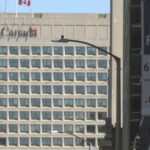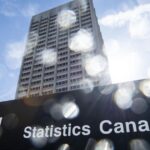In a welcome development for Canadian households, the nation’s inflation rate remained steady at 1.7% in May, marking the third consecutive month of stability in consumer prices. The data, released Tuesday by Statistics Canada, suggests that the Bank of Canada’s aggressive monetary policy approach has largely succeeded in taming inflation without triggering the economic contraction many economists had feared.
Behind this stability lies a notable cooling in shelter costs, particularly in rental prices, which have been a persistent driver of inflation over the past three years. Rent increases slowed to 4.3% year-over-year in May, down from the 5.1% recorded in April, representing the most significant deceleration in rental inflation since early 2023.
“We’re finally seeing meaningful relief in the rental market,” said Dominique LeBlanc, chief economist at Toronto Dominion Bank. “The combination of increased housing supply coming online and the lagged effects of higher interest rates has created conditions for rental price moderation that simply didn’t exist a year ago.”
The moderation in shelter costs comes as particularly good news for Canadian households that had been squeezed by the dual pressures of high housing expenses and elevated interest rates. According to Statistics Canada data, shelter costs now represent approximately 31% of the average Canadian household budget, up from 27% in 2019.
Food prices, another significant concern for consumers, rose by 2.1% compared to May 2024, representing a slight uptick from the 1.9% recorded in April. However, this remains well below the peaks of over 10% witnessed in 2022 and early 2023.
“The food inflation picture is complex,” explains Mary Anderson, senior economist at RBC Economics. “While we’re seeing more moderate price increases in staples like bread and dairy, fresh produce remains volatile due to weather-related supply challenges in key growing regions.”
Energy costs continued their recent trend of providing relief to consumers, with gasoline prices falling 2.3% year-over-year, despite recent tensions in the Middle East. Natural gas prices also declined by 1.7%, helping to offset increases in other categories.
The Bank of Canada, which targets 2% inflation, has maintained its benchmark interest rate at 3.25% since January 2025, following a series of cuts from the 5% peak reached in 2023. With inflation now consistently below target, markets are pricing in a high probability of another quarter-point cut at the central bank’s July meeting.
“The Bank has achieved what many thought impossible – a soft landing,” notes financial analyst William Chen at National Bank. “They’ve brought inflation back to target without triggering mass unemployment or a severe housing market correction.”
Core inflation measures, which exclude volatile items and are closely watched by the Bank of Canada, showed mixed trends. CPI-trim registered at 1.8%, while CPI-median came in at 1.9%, both slightly below the central bank’s target.
Regional variations remain significant, with Alberta reporting the lowest provincial inflation rate at 1.3%, likely influenced by provincial fuel tax relief measures. Meanwhile, British Columbia registered the highest at 2.1%, driven primarily by persistent housing pressures in Vancouver and Victoria.
The data also revealed that services inflation continues to outpace goods inflation, a trend that economic experts say reflects ongoing labor market tightness in service sectors.
For everyday Canadians, the inflation report offers genuine reason for optimism. After years of watching prices climb faster than wages, purchasing power appears to be gradually recovering. Average hourly wages increased by 3.6% in May, according to separate Statistics Canada data, outpacing inflation by nearly two percentage points.
As the Canadian economy navigates this new phase of price stability, the question remains: can policymakers maintain this delicate balance, or will new inflationary pressures emerge as interest rates continue their gradual descent? The coming months will be crucial in determining whether Canada’s inflation story truly represents a sustainable victory or merely a temporary reprieve.










